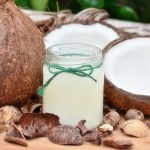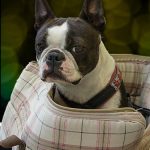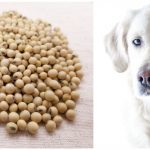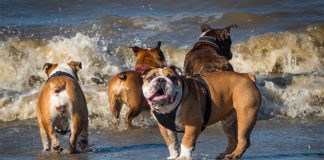
When a Great Dane is mixed with a Pitbull, the result is a gentle giant that looks tough but has an extremely friendly personality. Also called the Great Danebull, this mix inherited the best traits of two well-loved purebreds, the Great Dane and the American Pit Bull Terrier or simply the Pit Bull. Before getting a Great Danebull puppy from a breeder, read on so you’ll know what to expect from this one of a kind crossbreed.
History
The Great Danebull is the offspring of two dogs with interesting origins. The Pitbull’s history has a lot of similarities with the Great Dane’s. The first Pitbull was bred in England back in the 1898 AD to bait bulls. They were used for fighting and later on became watchdogs when they were brought to the United States. They are believed to be descendants of the English Bulldog and the English Terrier.
Like the Pitbulls, the Great Danes were fighting dogs during ancient times. They were used by the Vikings during wars. The country of origin of the Great Dane is Germany. Records say they existed since 1400 BC. They were originally bred to hunt boars. Despite their tough origins, the modern-day Great Danes and Pitbulls are known as people pleasers.

Appearance
The Great Danebulls are medium to large-sized dogs. They grow fast like their Great Dane parents. A dog of this breed usually grows 28-38 inches on average. Great Danes are the second tallest dog breeds. It is believed that they got the height from the world’s tallest dog, the Irish Wolfhounds which are related to them. The shorter ones, which are roughly 17-20 inches tall, inherited their height from the Pitbull.
Even before your Great Danebull reaches adulthood, you will notice that it is taller than the average dog. It has long and powerful legs like the Great Danes. A Great Danebull is muscular and tall, which combines the two distinct features of its parents. The females have a smaller built compared to the males.
The majority of the Great Danebulls have the face of the Pitbull on the top part but inherited the long muzzles of the Great Dane. It’s worth noting that the parents have different skull types. The Great Dane is long-headed or dolichocephalic while the Pitbull is brachycephalic or short-headed.
The coat colors and textures of Great Danebulls vary. However, many of them have a straight and glossy coat. They also have a smooth and dense coat, which is similar to that of a Great Dane’s. They have many coat color possibilities. You may see them in black, black and white, blue, chocolate, fawn, and white.

Grooming
This mix only requires minimal grooming because they have a short coat. It’s recommended to give them their bath once a month to keep the coat looking healthy. They have natural oils in the skin that protect them from dirt. Bathing them too often will scrape off that protective coating they have in their skin.
Great Danebulls are not hypoallergenic although they are a short-coated breed. They have the tendency to shed a lot, like the Pitbull. Because of their short coat, they cannot handle extreme weather conditions so it is important to limit their time outside. When going for a walk, it helps to put on your buddy a doggie sweater or jacket to keep him warm.
For Great Danebulls, a weekly brush is enough to get rid of mats and tangles. This can be done using a bristle brush. To make brushing easier, use a comb with an ergonomic handle. If you need something that will naturally condition your pet’s hair, use a brush with boar bristles. If you are using a pin-style brush, make sure it has rounded tips so it will not irritate the pet’s skin.
Give your Great Danebull a bath every month or even once every two months. As a short-coated breed, it does not need lots of bath time. Although this type of dog does not shed a lot, it is recommended to brush its coat before washing so you will not get clumps of hair that can clog the bathtub. Because your Great Danebull cannot easily tolerate cold weather or water, it helps to bathe him with warm water.
When it comes to shampoos, products that will not dry the dog’s skin are recommended for short-coated breeds. For pets that are prone to itching and dryness, use an all-natural shampoo formulated by a veterinarian. Aside from brushing and grooming, it is also important to clean your pet’s ears once every three weeks.
Personality
The Great Danebull may seem aggressive because of its muscular and athletic built. However, it is unlikely for this crossbreed to be rude unless it was not socialized early on. Its natural friendliness will show when the dog is trained properly. When raised well, they grow up as calm adult dogs. They are not only calm but also laid-back and dignified.
The Pitbull and Great Dane mix is good as a family pet and will fit well even in families with kids. However, be careful about exposing them to younger children especially if you are still learning how to interact with your new buddy. When it comes to its relationship towards other pets, there is the possibility of the Great Danebull to be a bit aggressive. This is one of the characteristics it might inherit from its Pitbull parent.
Expect your Great Danebull to be an affectionate and loving dog. It will enjoy lots of cuddling up with its owners since both breeds it comes from are known for their eagerness to please their owners. It does not easily get distracted and it is actually very focused. Its intense devotion towards the owners is one of the reasons why they are easy to train.
As with any dog, don’t leave Great Danebulls alone for long periods of time. Like their Great Dane parent, they will demand companion. They will enjoy some chasing and because they love people, they have the making of a good watchdog. A Pitbull is known for protecting its owners and will fight other dogs if it comes down to it.
The Great Danebull has an average intelligence level. However, it is an independent thinker and it can be assertive. The Pitbull is a dominant or alpha meaning he wants to be the leader of the pack. This explains why some Pitbulls tend to be aggressive when they are around other pets. The Great Dane loves being in a family or pack but the Pitbull only likes leading.
While they are affectionate towards their owners, they can be a bit aggressive with strangers. Give them some time to warm up when you have visitors coming in.
Recognitions
The Great Danebull is not yet granted the recognition by the American Kennel Club but major registries already acknowledge them. The International Designer Canine Registry and the Dog Registry of America both officially approve the Great Danebull as a crossbreed.
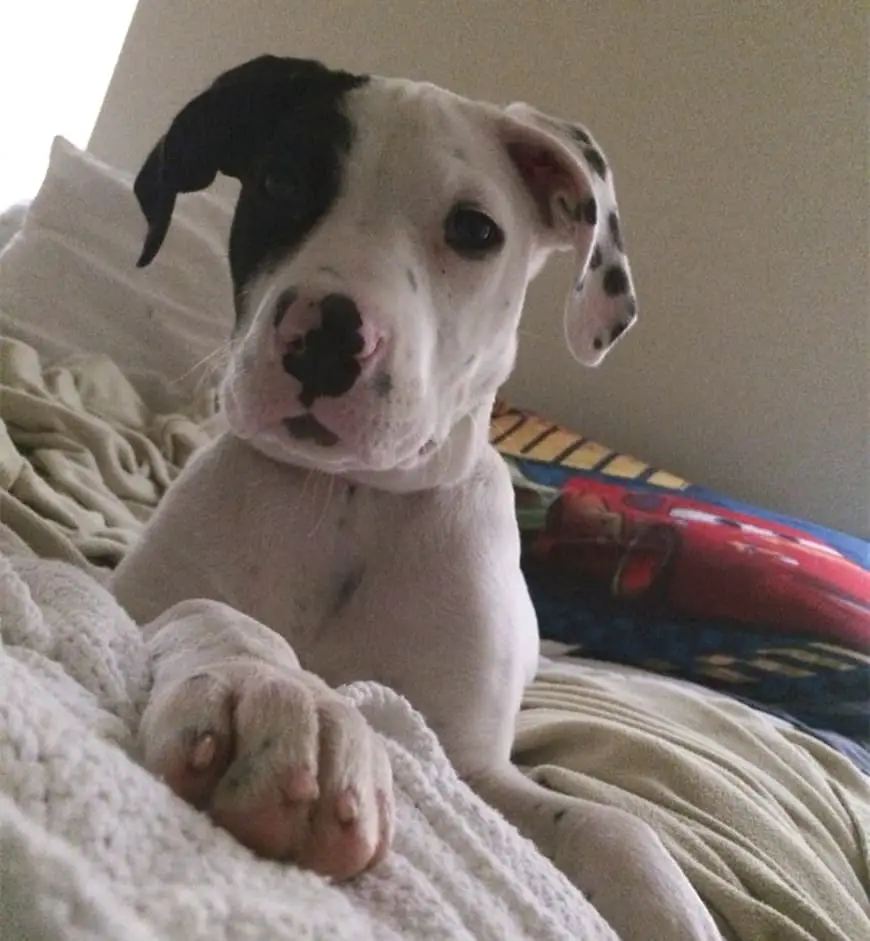
Great Dane PitBull Mix Health Issues
The life span of a Great Danebull depends on the more dominant gene. It may live as little as 7 to 10 years like the Great Dane. But if the Pitbull’s gene is more dominant it can live longer, 12 to 14 years on average. The more gigantic a dog is, the less likely it is that it will live longer. Still, you can help your dog live longer by keeping him healthy and being aware of its genetic predispositions. Here are some of the problems often seen in this crossbreed:
- Bloating – also known as gastric torsion, this stomach problem might be inherited from the Great Dane parent. The affected dog experiences the overstretching of the stomach. The exact cause is still unknown but there are certain cases that trigger it to happen. One of the causes is the dog eating too fast which may cause the stomach to twist on itself. The result is compression of the blood vessels and the blood not being able to properly flow to the organs.
- Cancer – as with any gigantic dog, the Great Danes are very prevalent to having bone cancer. There is a chance the offspring will inherit the condition. The most common type of bone tumor in dogs is osteosarcoma. This condition is more common in dogs with rapid bone growth and the Great Danes are among them.
- Hip dysplasia – both parents are susceptible to hip dysplasia so there is a high possibility that your Great Danebull will suffer from it as well. It can be prevented by limiting vigorous activities such as jumping. When exercising your pet, stick to moderate activities such as walking and running. Hip dysplasia can be extremely painful and may cause the dog to suddenly become reluctant to do his usual activities.
- Entropion – it is the abnormality of the eyelids wherein the eyelid is rolling inward. The symptoms include redness of the eye, squinting, and being sensitive to light. If the Great Danebull is suffering from Entropion, it should undergo surgical correction before it interferes with its vision.
- Cardiomyopathy – the most common type among dogs is dilated cardiomyopathy. When suffering from this condition, the heart does not pump well and does not have strong contractions. In the advanced stage of the disease, there is an enlargement of the heart chambers and the valves may have leakage. It can lead to symptoms of congestive heart failure when left untreated. The exact cause is not yet known but it is regarded as a hereditary condition because certain breeds are more vulnerable to it than the others. Large breeds are often the sufferers of this heart disease.

Exercise Needs
Because of their powerful legs, dogs of this breed can run up to 30 miles per hour. They can be pretty active so living in an apartment may not be the best option for them. A Great Dane mixed with Pitbull makes one energetic buddy. This is the reason why they are not suitable for small spaces. Besides that, they have a slight tendency to bark and howl.
Despite their intense energy, they don’t need a lot of exercise. You can give them short walks to keep them active. Romps in the park, as well as play sessions, are great activities when it’s too cold outside. Your dog cannot keep up with the cold weather so it is much better to just stay indoors. They require around 40 minutes of activity per day. As puppies, your pet will benefit from moderate exercise.
Feeding
Your Great Danebull needs four cups of feeding per day. The meals should be served in small portions multiple times a day to prevent bloating. Contrary to popular belief, a gigantic dog does not require lots of foods. However, the feeding requirements still depend on the pet’s energy level.
Dry dog food or kibbles are recommended for giant dogs as long as they are made of natural ingredients. The kibble should also be free from preservatives. Look for dog food with glucosamine to support your dog’s joint health. It is much better if their food is fortified with vitamins and minerals.
Many Great Danes are allergic to grains so there is a big chance that your Great Danebull will be hypersensitive to grains, too. Choose a grain-free dog food to be on the safe side because grains can cause dry itchy skin in dogs. Some manufacturers use sweet potatoes and pumpkins instead of grains as a substitute. Flaxseed is another good ingredient that can benefit the coat because of its omega-3 fatty acids.
Conclusion
A Great Danebull is a combination of the muscular Pitbull and the long-legged Great Dane. Getting a crossbreed puppy may be more expensive than getting a purebred but it is worth having one because the Great Dane is friendly, easy to train, and does not require much grooming.






